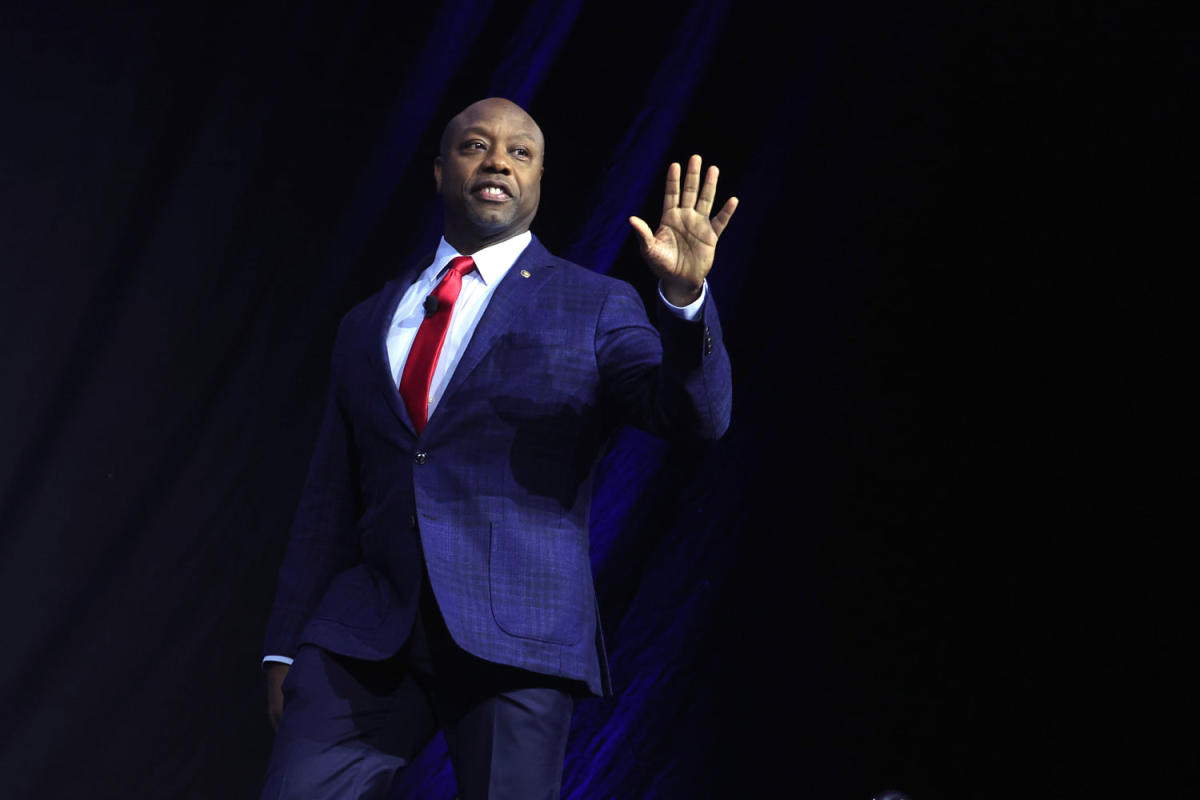The Southern Baptist Convention voted to condemn in vitro fertilization at its annual meeting in Indianapolis this week, over the objections of some members.
Conservative lawyers pushing to sharply restrict medication abortion lost a major case at the Supreme Court, after pursuing a strategy that many of their allies thought was an overreach.
Former President Donald Trump told Republicans in a closed-door meeting to stop talking about abortion bans limiting the procedure at certain numbers of weeks.
Sign up for The Morning newsletter from the New York Times
In one chaotic week, the anti-abortion movement showed how major players are pulling in various directions and struggling to find a clear path forward two years after their victory of overturning Roe v. Wade.
The divisions start at the most fundamental level of whether to even keep pushing to end abortion or to move on to other areas of reproductive health, including fertility treatments. A movement that once marched nearly in lock step finds itself mired in infighting and unable to settle on a basic agenda.
In some cases, hard-liners are seizing the reins, rejecting the incremental strategy that made their movement successful in overturning Roe. Other abortion opponents are backing away, sensing the political volatility of the moment.
At a lunch at the Southern Baptist Convention this week, Tom Ascol, a prominent conservative pastor from Florida, bemoaned what the fragmentation meant for their cause.
“The most important thing is, can we agree on the goal?” he said in a panel discussion. “Is the goal the absolute abolition of abortion in our nation?”
Some applauded loudly. Others stayed quiet.
For decades, the movement had honed a strategy to achieve a singular goal: ending a constitutional right to an abortion. But after that win, the anti-abortion movement has suffered a series of political losses. Democrats have won ballot initiatives in more than half a dozen states to protect abortion rights in state law.
For the first time in half a century, Republicans are trying to win a presidential election without the rallying cry of ending abortion as a mobilizing tactic for their base. The stakes are higher because it is unclear whether Trump will simply defer to their wishes in a second administration as he did in his first.
While abortion opponents dominate many conservative statehouses and courts, their efforts to go further — to ban abortion and transform reproductive health — have occasionally backfired. Republicans in swing states, prominent Senate candidates and even their champion Trump have all backed away from the anti-abortion agenda, for fear of more political fallout.
Even in anti-abortion strongholds, control is slipping. In Arizona, anti-abortion adherents make up the bulk of the Republican elected officials in the state Legislature, but this spring they narrowly lost their heated fight to reinstate a near-total abortion ban from 1864.
“We are at a reckoning point especially on the political side, where candidates, elected officeholders, have to make a choice on how much they want to protect life,” said Greg Scott, vice president of policy at the Center for Arizona Policy, which supported the 1864 ban.
Marjorie Dannenfelser, the president of Susan B. Anthony Pro-Life America who worked for years on an incremental strategy, has pushed for Republicans to embrace a 15-week national ban on abortion. When Roe fell, her organization was primarily worried about Democrats’ use of referendums to secure abortion rights in state constitutions. But now she sees a much bigger threat: Democrats winning office at the national level, and eventually codifying Roe with something like the Women’s Health Protection Act.
You have another election like the 2022 midterms, she said, “and all the ballot initiatives are a moot point.”
While disappointed in those results, she finds lessons in the long-term vision of her movement, which historically refuses to give up even amid major setbacks.
“The hidden reality of the pro-life movement is the determination,” she said. “It would be unrealistic to think it would be a straight line to success.”
In interviews, anti-abortion activists sometimes sounded frustrated. Some blamed the media, while others acknowledged their positions were minority ones. A third of Americans agree with the statement that “human life begins at conception, so an embryo is a person with rights,” according to the Pew Research Center.
Dr. Christina Francis, who leads the American Association of Pro-Life Obstetricians and Gynecologists, lost at the Supreme Court this week in the case that could have restricted access to medication abortion.
“We have a lot of work to do in talking to people about this issue,” she said in an interview last month. “Public opinion isn’t just going to change on a dime.”
A major challenge is getting lawmakers and politicians to push forward at all now that Roe is gone, said Kristan Hawkins, president of Students for Life of America. “They haven’t really woken up to all that can and must be done,” she said. “For us, it is a lot of education.”
She sees a broader cultural challenge in the rising generation whose views about being human were formed by secularism, not by parents who took them to church, she said. Many do not want to have children at all, she noted.
An uncompromising segment of the movement is pushing ahead for “fetal personhood,” or giving embryos constitutional rights, a mission based in its Christian values. Jason Rapert, who founded the National Association of Christian Lawmakers, is organizing allied state lawmakers to push for such legislation and sees irreconcilable differences for America’s future.
“The bottom line for America, we are living in basically the same environment that the nation was in the 1850s, where the argument was that you could have slave states and free states,” he said. “The nation cannot go forward with kill states and life states.”
But other local actors in the anti-abortion movement are urging a longer term strategy.
“Gone are the days, in Ohio that is, of just introducing legislation to limit abortion,” said Mike Gonidakis, president of Ohio Right to Life, citing his state’s new constitutional amendment protecting abortion access, which voters approved in November.
“We might have to accept less than a whole loaf,” he said. “Our movement, our elected officials, need to appreciate sometimes you have to take what you can get now, and live to fight another day.”
c.2024 The New York Times Company

Amanda Smith is a dedicated U.S. correspondent with a passion for uncovering the stories that shape the nation. With a background in political science, she provides in-depth analysis and insightful commentary on domestic affairs, ensuring readers are well-informed about the latest developments across the United States.







